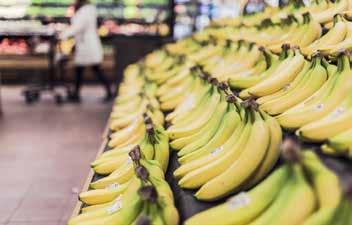
3 minute read
Shopping
lifestyle Shopping
EASY WAYS TO SAVE ON YOUR SUPERMARKET SHOP
Advertisement
With grocery price inflation at a record high, here are some top tips that could save you hundreds of pounds on your food bills…
Shop at the cheapest supermarket
Every month, Which? analyses the prices of popular groceries at the UK’s biggest supermarkets and often finds big price differences. In October last year, Aldi was the cheapest supermarket, with a basket of 48 groceries costing an average of £75.79. The same or equivalent items from the priciest supermarket in the analysis, Waitrose, cost £101.17 – that’s a £25.38 saving.
Opt for supermarket-own brands
Shoppers can make significant savings by opting for supermarket own-brand products over more expensive branded items.
Avoid convenience stores
Did you know that a basket of groceries from Tesco Express costs on average £279 more than a Tesco supermarket store over the course of a year? For those who have the option of going to a regular supermarket rather than a convenience store, it pays to make the switch.
Stock up when you can
Grocery prices can vary from week to week. Price fluctuations, or ‘yo-yo’ pricing, means that it is often worth shoppers stocking up when items they buy regularly are discounted. This approach can work particularly well for store-cupboard items and products that can be frozen.
Get rewarded
Shoppers can sign up for supermarket loyalty schemes to earn points and save money on their shopping. Many schemes offer exclusive discounts, rewards, charity donations and competitions to loyal customers. However, beware that these savings could easily be cancelled out if the shop’s prices are higher than those of its competitors.
Don’t be duped by discounts
Supermarkets often place vertical signs with offers on them in the middle of the aisle, with the intention of catching shoppers’ eyes. While special offers can be helpful, they can also encourage shoppers to purchase items they hadn’t intended on buying. When working out whether the price is actually a bargain, look at the unit or ‘per 100g’ cost rather than the overall pack price – this makes it much easier to compare the product against alternatives.
Write a list & stick to it
Taking the simple step of making a list and trying not to be distracted by other products is an easy way for shoppers to save money. However, this can be more difficult to stick to in unfamiliar stores. As a rule of thumb, in most stores dairy products and bread can be found at the back, fruit and vegetables are at the front and drinks and frozen items are at the far end.
Search different aisles
Some products, including rice, sauces, and baking ingredients, can be found in several supermarket aisles at different prices. For example, rice and chickpeas can be cheaper in the world foods aisle than they are in other parts of the shop. Similarly, sultanas and cashew nuts often cost less in the baking aisle than they do on the snacking shelves. It’s also worth checking every shelf; supermarkets often place their less-profitable items on the higher and lower shelves, and the ones they want to promote at eye level.











